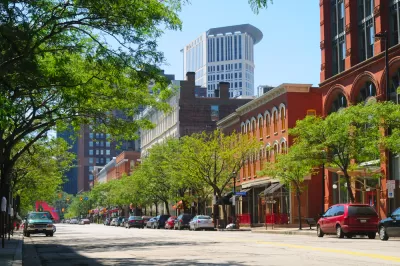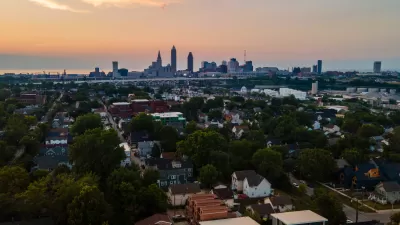A ULI-led symposium in Cleveland is looking at how an update of the city's outdated zoning code could revive some neighborhoods in the city.

During an all-day conference last week, Cleveland planners, developers, lawyers, community development officials, and architects came together to discuss, what was described as "an extensive dialogue on reshaping the code to encourage development and to make the city more attractive and livable." Reporting in The Plain Dealer, Steven Litt writes that the current code impedes walkability and separates land-uses, making it more difficult to create the pedestrian friendly environments urban dwellers are currently seeking.
One of the topics attendees are looking at is form-based zoning, which has been successfully implemented in several areas of the city. However, Cleveland's mayor is asking that the benefits of any zoning code changes be felt citywide.
As for Mayor Frank Jackson, he said he viewed form-based zoning as "a great tool, but as I tell my people, the measure of a tool is how it is used."
He said he would judge the new zoning on whether it enables economically challenged neighborhoods to participate in the growth that has occurred in a half-dozen popular areas, such as Ohio City, Tremont, University Circle and Detroit-Shoreway.
Developer Ron Ratner of Forest City advised in his key note address to the symposium that the city be careful in its approach to adopting form-based zoning in the city—understanding that it won't work in all areas. "You can't force the market to create density and walkability, but you can reinforce it where it does work," he said.
FULL STORY: Could a new zoning code make Cleveland a greener, healthier and more equitable city?

Study: Maui’s Plan to Convert Vacation Rentals to Long-Term Housing Could Cause Nearly $1 Billion Economic Loss
The plan would reduce visitor accommodation by 25,% resulting in 1,900 jobs lost.

North Texas Transit Leaders Tout Benefits of TOD for Growing Region
At a summit focused on transit-oriented development, policymakers discussed how North Texas’ expanded light rail system can serve as a tool for economic growth.

Using Old Oil and Gas Wells for Green Energy Storage
Penn State researchers have found that repurposing abandoned oil and gas wells for geothermal-assisted compressed-air energy storage can boost efficiency, reduce environmental risks, and support clean energy and job transitions.

Private Donations Propel Early Restoration of Palisades Playground
Los Angeles has secured over $1.3 million in private funding to restore the Pacific Palisades playground months ahead of schedule, creating a modern, accessible space that supports community healing after recent wildfires.

From Blight to Benefit: Early Results From California’s Equitable Cleanup Program
The Equitable Community Revitalization Grant (ECRG) program is reshaping brownfield redevelopment by prioritizing projects in low-income and environmental justice communities, emphasizing equity, transparency, and community benefits.

Planting Relief: Tackling Las Vegas Heat One Tree at a Time
Nevada Plants, a Las Vegas-based nonprofit, is combating the city’s extreme urban heat by giving away trees to residents in underserved neighborhoods, promoting shade, sustainability, and community health.
Urban Design for Planners 1: Software Tools
This six-course series explores essential urban design concepts using open source software and equips planners with the tools they need to participate fully in the urban design process.
Planning for Universal Design
Learn the tools for implementing Universal Design in planning regulations.
Ascent Environmental
Borough of Carlisle
Institute for Housing and Urban Development Studies (IHS)
City of Grandview
Harvard GSD Executive Education
Toledo-Lucas County Plan Commissions
Salt Lake City
NYU Wagner Graduate School of Public Service




























